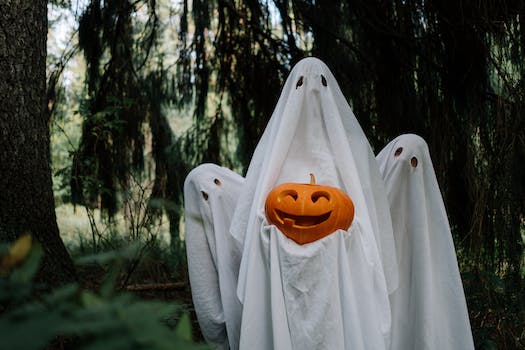Horror movies have always been a captivating and thrilling genre, leaving audiences on the edge of their seats. One of the most crucial aspects that adds to the overall impact of a horror movie is its ending. The way a horror film concludes can either leave viewers in shock, satisfied, or even craving for more. In this article, we will delve into the intricate world of horror movie endings, dissecting the suspense and unraveling the thrills that make them so memorable.
- 1. Introduction
- 1.1. What makes a horror movie ending memorable?
- 1.2. The importance of a strong ending in horror films
- 1.3. The impact of a well-crafted twist ending
- 2. Analysis of Horror Movie Endings
- 2.1. The role of suspense and tension in horror film endings
- 2.2. Exploring different types of horror movie endings
- 2.3. The significance of character development in horror film conclusions
- 2.4. Examining the use of visual effects in horror movie finales
- 2.5. The influence of sound design on the effectiveness of horror film endings
- 3. Iconic Horror Movie Endings
1. Introduction
Horror movies have always been a popular genre, captivating audiences with their ability to elicit fear, suspense, and thrills. One of the most intriguing aspects of a horror movie is its ending. It is the culmination of all the suspense built throughout the film, the moment where all the pieces of the puzzle come together. Analyzing horror movie endings not only allows us to understand the story on a deeper level but also provides insight into the techniques used to create a truly chilling and memorable experience. In this article, we will delve into the world of horror movie endings, unraveling the suspense and thrills that make them so captivating.
1.1. What makes a horror movie ending memorable?
A memorable horror movie ending is one that leaves a lasting impression on the audience, lingering in their minds long after the credits roll. It is the culmination of suspense, terror, and thrills that keeps viewers engaged throughout the film. The ending of a horror movie is crucial as it can either make or break the entire viewing experience. A well-crafted ending can elevate the entire narrative, leaving the audience feeling satisfied and haunted at the same time. In this article, we will delve into what elements contribute to making a horror movie ending memorable and explore why certain endings continue to haunt us.
1.2. The importance of a strong ending in horror films
The importance of a strong ending in horror films cannot be overstated. The way a horror movie concludes can make or break the overall experience for the audience. A well-crafted ending has the power to leave a lasting impression, lingering in the minds of viewers long after the credits roll. It is the culmination of suspense, tension, and thrills, and it is what separates a memorable horror film from a forgettable one. In this article, we will explore the significance of a strong ending in horror movies and how it contributes to the overall effectiveness of the genre.
1.3. The impact of a well-crafted twist ending
A well-crafted twist ending has the power to leave audiences in awe, questioning everything they thought they knew about the story. In the realm of horror movies, a twist ending can elevate the suspense and thrill to another level, making it a crucial element for analyzing the effectiveness of a film’s conclusion. The impact of a twist ending goes beyond mere surprise; it can reshape the entire narrative, leaving a lasting impression on viewers. By unraveling the suspense and thrilling audiences, horror movie endings with well-crafted twists have the potential to become iconic and memorable in the genre.
2. Analysis of Horror Movie Endings
Horror movie endings often leave audiences on the edge of their seats, contemplating the terrors they have just witnessed. These climactic moments are crucial for the overall impact and success of a horror film. In this section, we will analyze the various elements that make horror movie endings so thrilling and suspenseful.
1. Plot Twists: One of the most effective ways to create an unforgettable horror movie ending is through a clever plot twist. This unexpected turn of events can leave viewers shocked and disturbed, adding an extra layer of suspense to the conclusion of the film. Whether it’s a revelation about the true identity of the killer or a sudden twist in the narrative, plot twists keep audiences engaged and guessing until the very end.
2. Ambiguous Endings: Many horror movies opt for ambiguous endings, leaving the resolution of the story up to interpretation. This technique allows for a lingering sense of unease and leaves room for discussion among viewers. Ambiguous endings can be frustrating for some, but they also add to the overall mystery and suspense of the film, leaving audiences pondering the fate of the characters long after the credits roll.
3. Final Showdowns: A common trope in horror movie endings is the final showdown between the protagonist and the antagonist. This climactic battle often takes place in a dark and dangerous setting, intensifying the suspense and fear. The outcome of this confrontation can determine the protagonist’s survival or demise, providing a satisfying resolution to the story.
4. Psychological Twists: Some horror movie endings rely on psychological twists to deliver a chilling conclusion. These twists often involve revealing the true nature of the protagonist’s reality or blurring the lines between sanity and madness. By toying with the audience’s perception, these endings leave a lasting impact and can leave viewers questioning their own sanity.
In conclusion, horror movie endings play a crucial role in the overall success of the film. Plot twists, ambiguous endings, final showdowns, and psychological twists are just a few elements that make horror movie endings so thrilling and suspenseful. These endings leave audiences captivated and eager to unravel the mysteries and horrors that lie within the world of the film.
2.1. The role of suspense and tension in horror film endings
The role of suspense and tension in horror film endings cannot be understated. These elements are crucial in creating a truly memorable and thrilling experience for the audience. The ending of a horror movie is often the most crucial part, as it is where all the built-up suspense and tension culminate. It is in these final moments that the audience expects to be scared, shocked, or even surprised.
Suspense is the feeling of anticipation or uncertainty about what is going to happen next. It keeps the audience on the edge of their seats, eagerly waiting to see how the story will unfold. Tension, on the other hand, is the buildup of emotional intensity that creates a sense of unease or discomfort. It heightens the audience’s emotional response and prepares them for the impending climax.
A well-executed horror film ending utilizes suspense and tension to maximize the impact of the scares and twists. By carefully manipulating these elements, filmmakers can create a rollercoaster of emotions for the viewers. They can tease the audience with hints and foreshadowing, keeping them guessing about the outcome. This uncertainty adds an extra layer of excitement and engagement.
Furthermore, suspense and tension in horror movie endings play a crucial role in the catharsis experienced by the audience. After being subjected to a series of terrifying events throughout the film, the resolution of the suspense and tension provides a sense of relief and release. It allows the viewers to process their fears and anxieties, leaving them with a lasting impression.
In conclusion, the role of suspense and tension in horror film endings is vital. These elements enhance the overall experience and leave a lasting impact on the audience. A well-crafted ending that effectively utilizes suspense and tension can make a horror movie truly unforgettable.
2.2. Exploring different types of horror movie endings
Horror movie endings have always been a source of fascination for both casual viewers and dedicated fans of the genre. They play a crucial role in determining the overall impact and lasting impression of a horror film. From shocking twists to ambiguous conclusions, there are various types of endings that can leave audiences haunted, satisfied, or even puzzled. This section will explore some of the different types of horror movie endings, delving into their significance and the emotions they evoke.
2.3. The significance of character development in horror film conclusions
Character development plays a crucial role in the overall impact and effectiveness of horror film conclusions. The way characters evolve and grow throughout the movie can greatly influence the audience’s emotional investment and perception of the ending. In horror movies, character development often involves the protagonist facing their fears, overcoming personal obstacles, or undergoing a transformation. This development not only adds depth and complexity to the story but also enhances the viewers’ connection with the characters.
The significance of character development becomes particularly apparent in horror movie endings. A well-developed character creates a stronger sense of empathy and investment from the audience, making them more susceptible to the suspense and thrills of the climax. When viewers have a deeper understanding of the character’s motivations, struggles, and desires, they become more emotionally involved in the resolution of the story.
Moreover, character development can also impact the effectiveness of plot twists and surprise endings in horror movies. If the characters are one-dimensional or poorly developed, the twists may feel forced or unconvincing. On the other hand, when the audience has a solid grasp of the characters’ personalities, beliefs, and relationships, unexpected revelations can have a more profound impact, leaving the viewers in awe or shock.
In summary, the significance of character development in horror movie conclusions cannot be overstated. It adds depth, emotional investment, and authenticity to the story, making the audience more engaged and receptive to the suspense and thrills. Well-developed characters enhance the overall impact of plot twists and surprise endings, creating a more memorable and satisfying viewing experience.
2.4. Examining the use of visual effects in horror movie finales
Visual effects play a crucial role in creating a captivating and memorable finale in horror movies. The use of these effects adds an extra layer of suspense, fear, and excitement, enhancing the overall experience for the audience. Examining the use of visual effects in horror movie finales allows us to delve deeper into the impact they have on the narrative and the audience’s emotional response.
When analyzing horror movie endings, it becomes evident that visual effects are often employed to intensify the climactic moments. These effects can include CGI (computer-generated imagery), practical effects, and post-production enhancements. For instance, the transformation of a character into a monstrous creature or the creation of supernatural entities is made possible through the use of visual effects.
Furthermore, visual effects are used to amplify the horror elements presented in the movie’s climax. Blood splatters, dismemberments, and other gory scenes are made more realistic and horrifying through the application of visual effects. This heightened level of visual intensity contributes to the shock value and leaves a lasting impression on the audience.
In addition to creating a visually stunning spectacle, visual effects in horror movie finales also aid in building tension and suspense. The clever use of lighting effects, shadows, and eerie atmospheres helps to establish a sense of unease and anticipation. These visual elements work hand in hand with the narrative and sound design to keep the audience on the edge of their seats.
Overall, the use of visual effects in horror movie finales is a vital aspect of creating an impactful and thrilling cinematic experience. It allows filmmakers to push the boundaries of imagination and immerse the audience in a world of terror. By carefully examining the incorporation of visual effects, we can gain a deeper understanding of how they contribute to the overall success of a horror movie’s ending.
2.5. The influence of sound design on the effectiveness of horror film endings
The influence of sound design on the effectiveness of horror film endings cannot be understated. Sound plays a crucial role in creating a sense of suspense, tension, and fear in horror movies. It has the power to enhance the visual elements and amplify the emotions experienced by the audience.
In horror movie endings, sound design can make or break the overall impact. The right combination of eerie music, chilling sound effects, and strategically placed silence can heighten the suspense and leave a lasting impression on viewers.
For example, a sudden loud noise or a piercing scream can jolt the audience, creating a jump scare moment that lingers in their minds. On the other hand, a gradual buildup of atmospheric sounds, such as creaking floorboards or distant whispers, can build tension and anticipation, leading to a spine-chilling climax.
Additionally, sound can also help establish the tone and atmosphere of a horror movie ending. A haunting melody or a dissonant soundtrack can evoke a feeling of unease and unsettlement, setting the stage for a terrifying conclusion. Conversely, a lack of sound or the deliberate absence of music can create a sense of emptiness and isolation, adding to the overall sense of dread.
In conclusion, sound design plays a pivotal role in shaping the effectiveness of horror film endings. It has the ability to evoke fear, heighten suspense, and establish the desired atmosphere. A well-crafted sound design can leave a lasting impact on viewers, ensuring that the scares and thrills of a horror movie linger long after the credits roll.
3. Iconic Horror Movie Endings
Horror movies have a knack for delivering spine-chilling endings that leave audiences both terrified and satisfied. These endings often become iconic, etched into the minds of viewers long after the credits roll. Let’s delve into some of the most memorable and spine-tingling horror movie endings of all time.
1. The Shining (1980):
Stanley Kubrick’s masterpiece, ‘The Shining,’ concludes with an enigmatic shot of Jack Torrance, frozen to death in the hedge maze outside the Overlook Hotel. This haunting image leaves the audience questioning the true nature of evil and the hotel’s supernatural powers.
2. Psycho (1960):
Alfred Hitchcock’s ‘Psycho’ has one of the most shocking twists in cinematic history. The final scene reveals that Norman Bates, the seemingly mild-mannered motel owner, is actually a murderous psychopath living with his mother’s corpse. This revelation sends shivers down the spine and forever changed the horror genre.
3. The Blair Witch Project (1999):
Shot in found-footage style, ‘The Blair Witch Project’ ends with the main character, Heather, exploring an abandoned house. The camera drops to the floor, and her terrified screams fill the darkness. This open-ended conclusion leaves viewers guessing about the fate of the characters and the existence of the infamous Blair Witch.
4. Halloween (1978):
John Carpenter’s ‘Halloween’ culminates in an intense showdown between Laurie Strode and the relentless serial killer, Michael Myers. After seemingly defeating Myers, Laurie looks out the window only to find him gone. This ambiguous ending leaves audiences on edge, wondering if evil truly can be vanquished.
5. The Sixth Sense (1999):
M. Night Shyamalan’s ‘The Sixth Sense’ features a mind-bending twist that reveals the protagonist, Dr. Malcolm Crowe, has been dead all along. The final scene, where Cole confesses his ability to see dead people, shocks audiences and prompts them to reevaluate everything they thought they knew.
These iconic horror movie endings demonstrate the power of suspense, mystery, and psychological twists to captivate and terrify viewers. They contribute to the enduring popularity of the horror genre and continue to inspire filmmakers to push the boundaries of fear.
3.1. Unforgettable endings in classic horror films
Unforgettable endings in classic horror films
3.2. Modern horror movies with shocking twists
Modern horror movies have taken the genre to new heights with their shocking twists. These films keep viewers on the edge of their seats, leaving them with lingering feelings of unease and surprise. One such example is the movie ‘Get Out’ directed by Jordan Peele. The film’s ending reveals a disturbing truth about the seemingly welcoming suburban neighborhood, leaving audiences stunned and questioning societal norms. Another notable modern horror movie with a shocking twist is ‘Hereditary’ directed by Ari Aster. The film’s ending takes a dark turn, unveiling a sinister family secret that completely changes the narrative. These modern horror movies with their unexpected twists not only frighten audiences but also challenge their perceptions and keep them guessing until the very end.
3.3. The evolution of horror film endings over the years
The evolution of horror film endings over the years has been a captivating journey for fans of the genre. From the early days of silent films to the modern era of high-budget productions, horror movie endings have undergone significant changes, reflecting the shifting tastes and expectations of audiences.
In the early years of cinema, horror film endings often followed a formulaic structure. The protagonist would confront the monster or villain, engage in a climactic battle, and ultimately triumph over evil. These endings provided a sense of closure and reassurance for viewers, reinforcing the idea that good would always prevail over darkness.
However, as the genre evolved, filmmakers began to experiment with more ambiguous and unsettling endings. Instead of neatly tying up loose ends, horror movies started to leave audiences with lingering questions and a sense of unease. These open-ended conclusions allowed for interpretation and speculation, inviting viewers to engage in discussions and debates about the true meaning behind the events they had witnessed.
In recent years, horror film endings have taken a variety of forms. Some movies opt for shocking plot twists that completely upend the audience’s expectations, leaving them stunned and reeling. Others embrace a more psychological approach, focusing on the lingering psychological trauma experienced by the characters. These endings often leave viewers with a lingering sense of dread, contemplating the lasting impact of the horrors they have witnessed.
Overall, the evolution of horror film endings reflects the genre’s ability to adapt and evolve with the changing tastes and sensibilities of audiences. From the formulaic victories of the past to the ambiguous and thought-provoking conclusions of the present, horror movies continue to captivate and surprise viewers, ensuring that the genre remains a powerful force in the world of cinema.
3.4. Cult favorites with unexpected conclusions
Cult favorites with unexpected conclusions:
1. The Wicker Man (1973) – This British horror film takes viewers on a journey of mystery and intrigue as a police officer investigates the disappearance of a young girl on a remote island. The shocking final scene reveals a chilling pagan ritual that leaves audiences stunned.
2. Donnie Darko (2001) – This mind-bending psychological thriller follows the troubled Donnie Darko as he navigates through strange occurrences and encounters a mysterious giant bunny named Frank. The unexpected twist at the end leaves viewers questioning reality and the true meaning behind it all.
3. The Cabin in the Woods (2012) – This genre-defying horror film combines elements of comedy, satire, and supernatural terror. As the story unfolds, a group of friends find themselves trapped in a cabin that holds dark secrets. The unexpected revelation of a hidden organization orchestrating their fates adds a unique twist to the traditional horror movie ending.
4. Rosemary’s Baby (1968) – This classic psychological horror film delves into the paranoia and fear experienced by Rosemary, a pregnant woman who suspects her neighbors are part of a satanic cult. The shocking climax and revelation of the true nature of her baby’s father creates a haunting and unforgettable conclusion.
5. The Sixth Sense (1999) – M. Night Shyamalan’s masterpiece follows child psychologist Malcolm Crowe as he attempts to help a young boy who claims to see dead people. The unexpected twist ending, revealing the truth about the protagonist, leaves audiences in awe and rethinking everything they thought they knew.
These cult horror films with unexpected conclusions have become iconic for their ability to surprise and shock audiences, leaving a lasting impression long after the credits roll.
3.5. Controversial horror movie endings that sparked debates
Controversial horror movie endings have always been a topic of intense debate among film enthusiasts. These endings are often designed to leave the audience in a state of shock and disbelief, prompting discussions and theories about their true meaning. One such example is the ending of the film ‘The Blair Witch Project’ (1999), where the fate of the characters is left ambiguous, leaving viewers divided on whether it was a brilliant move or a disappointing cop-out. Another controversial ending is found in ‘The Mist’ (2007), where the protagonist makes a heartbreaking decision that sparks discussions about the moral implications of his actions. These endings not only provide a thrilling conclusion to the story but also provoke thought-provoking discussions about the nature of fear and human psychology.
Conclusion
In conclusion, the endings of horror movies play a crucial role in captivating audiences and leaving a lasting impression. By unraveling the suspense and thrills, these endings often provide closure, shock, or even a twist that can completely change the viewer’s perception. Whether it is a satisfying resolution or an open-ended conclusion, analyzing horror movie endings adds an extra layer of excitement and intrigue to the overall cinematic experience.





